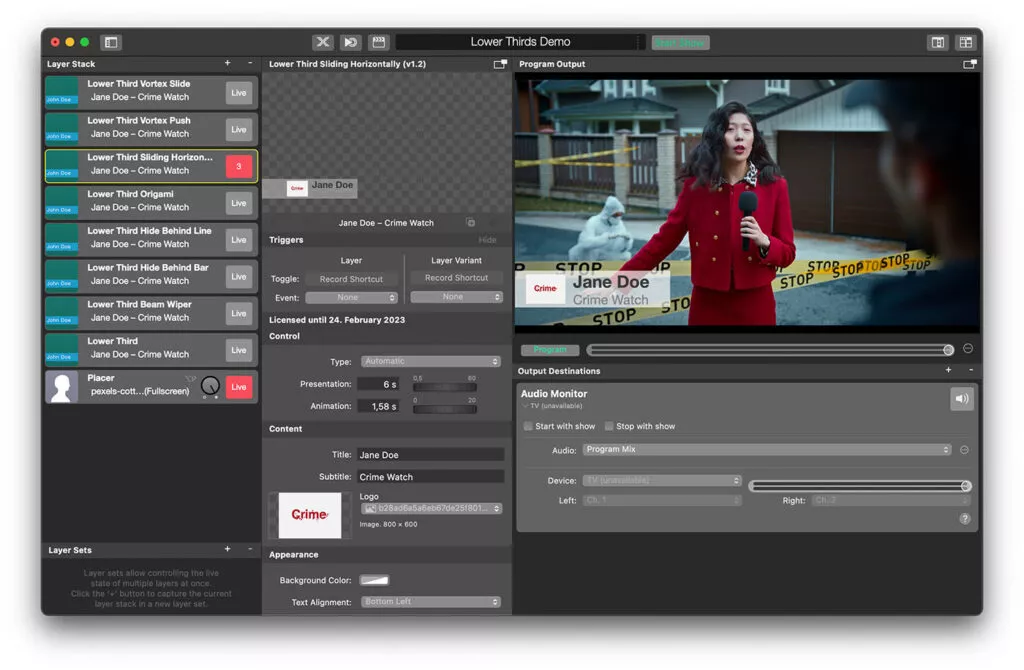Lower thirds is a term from the TV broadcast industry and describes graphical overlays that are typically displayed on the lower third portion of the screen during video productions. They usually contain text that identifies the name and title of a person or a topic being discussed, and can also include additional information such as a logo or a website address. Lower thirds are commonly used in news broadcasts, documentaries, and corporate videos to provide context and information to the audience. In live video production, lower thirds can be added and edited in real-time using specialized software such as mimoLive®, which allows users to create custom lower thirds and integrate them seamlessly into their productions.
The benefits of using lower thirds in your videos
Lower thirds, also known as crawl lines or subheads, are graphic elements that are typically placed at the bottom of a video screen. They are commonly used to display the names and titles of people on screen, or to provide additional context or information about the content of the video. Lower thirds can be an effective way to enhance the production value of a video, and can be easily added using video editing software.

How to design effective lower thirds
There are a few key elements to consider when designing lower thirds for your video. First and foremost, it’s important to choose a font that is easy to read, as lower thirds will often be displayed for a short period of time and may be viewed on a variety of different devices. It’s also a good idea to use a font that complements the overall aesthetic of your video.
Creating a cohesive look with lower thirds and other graphic elements
Next, consider the placement of your lower third on the screen. It’s typically best to place it towards the bottom of the frame, as this allows it to be seen without obscuring important visual elements. You should also make sure to leave enough space around the text to ensure that it is easy to read and doesn’t get lost in the background.
In terms of color, it’s generally a good idea to use a color that contrasts with the background, as this will make the text stand out and be more easily readable. You can also use color to add visual interest or to tie your lower third in with the overall theme of your video.
Adding motion to your lower thirds with animation
Lower thirds can be animated to add movement and interest to your video. This can be done using keyframes in your video editing software, allowing you to control the speed and trajectory of the animation.
Using lower thirds to add context and information to your video content
When using lower thirds, it’s important to strike a balance between providing helpful information and not overwhelming the viewer with too much text. Keep your lower thirds concise and to the point, and consider using them sparingly to avoid overwhelming the viewer with too much information.
Overall, lower thirds can be a valuable tool in enhancing the production value of your video and can help to provide important context and information to your viewers. By considering factors such as font, placement, color, and animation, you can create lower thirds that effectively communicate your message and add visual interest to your video.




